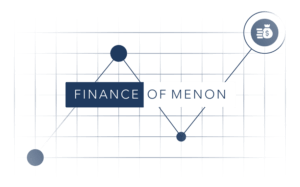Imagine your retirement plan as a three-legged stool. Each leg—Social Security, employer-sponsored retirement plans, and personal savings—supports your financial stability. If one leg is weak or missing, the entire stool becomes unstable, jeopardizing your comfort in retirement.
In this comprehensive guide, we’ll delve into each leg, analyze current data, and provide actionable insights to ensure your retirement stool stands firm.
Leg 1: Social Security – The Foundation with Limitations
Understanding Social Security’s Role
Social Security is designed to provide a base level of income in retirement, but it’s not intended to be your sole source of support. The percentage of pre-retirement income that Social Security replaces varies based on your earnings:
- Low earners: Upto ~75% replacement rate.
- Average earners: Upto ~40% replacement rate.
- High earners: Upto ~25% replacement rate.
For instance, an individual earning $50,000 annually can expect Social Security to replace about 35% of their income, equating to $17,500 per year.
Challenges Ahead
The Social Security Administration projects that, without intervention, trust fund reserves may be depleted by 2035, potentially reducing benefits to 83% of current levels. This underscores the importance of not relying solely on Social Security for retirement income.
Action Steps:
- Stay Informed: Regularly review updates from the Social Security Administration.
- Plan for Reductions: Consider potential benefit reductions in your retirement planning.
- Maximize Benefits: Strategies like delaying benefits past full retirement age can increase monthly payments by up to 24% if deferred until age 70.
Leg 2: Employer-Sponsored Retirement Plans – A Critical Component
401(k) Plans and Their Impact
Employer-sponsored retirement plans, such as 401(k)s, play a vital role in retirement savings. Here’s a breakdown of average 401(k) balances by age:
- Under 25: Average balance of $7,351; median balance of $2,816.
- 25 to 34: Average balance of $37,557; median balance of $14,933.
- 35 to 44: Average balance of $91,281; median balance of $35,537.
- 45 to 54: Average balance of $168,646; median balance of $60,763.
- 55 to 64: Average balance of $244,750; median balance of $87,571.
- 65 and up: Average balance of $272,588; median balance of $88,488.
Employer Contributions Matter
Employer matching contributions can significantly boost your retirement savings. For example, if your employer matches up to 5% of your salary, contributing at least that amount ensures you’re not leaving free money on the table.
Action Steps:
- Maximize Contributions: Aim to contribute at least enough to receive the full employer match. and check vesting schedule.
- Increase Savings Rate: Strive to save 10-15% of your annual income, aiming for 20% if possible.
- Diversify Investments: Ensure your 401(k) is well-diversified to manage risk effectively. Pick the right funds so you are not leaving money on the table on another end.
Leg 3: Personal Savings and Investments – Your Control Lever
The Importance of Personal Savings
Personal savings and investments provide flexibility and control over your retirement planning. These can include:
- Individual Retirement Accounts (IRAs): Traditional and Roth IRAs offer tax advantages.
- Health Savings Accounts (HSAs): Can be used for medical expenses in retirement.
- Taxable Brokerage Accounts: Provide investment opportunities outside of retirement-specific accounts.
- Real Estate Investments: Rental properties can generate passive income.
Current Savings Landscape
According to the Federal Reserve, the average retirement savings, including 401(k) accounts, are:
- Under 35: Approximately $30,000.
- 35–44: Around $132,000.
- 45–54: About $255,000.
- 55–64: Approximately $408,000.
- 65–74: Around $426,000.
Action Steps:
- Automate Savings: Set up automatic transfers to your investment accounts to ensure consistent contributions.
- Explore Tax-Advantaged Accounts: Utilize IRAs and HSAs for their tax benefits.
- Consider Professional Advice: Consulting a financial advisor can help tailor your investment strategy to your goals.
Balancing the Stool: Creating a Resilient Retirement Plan
Achieving a balanced retirement plan involves:
- Assessing Each Leg: Evaluate your expected Social Security benefits, employer-sponsored plan balances, and personal savings.
- Identifying Gaps: Determine if one leg is underfunded and needs attention.
- Implementing Strategies: Increase contributions, adjust investment allocations, or explore
You wouldn’t build a house on a wobbly foundation. So why build your future that way? A stable retirement plan requires attention to all three legs of the stool. By understanding the role each component plays and taking proactive steps to strengthen them, you can build a retirement plan that offers security and peace of mind.
When you plan for retirement, aim for balance. Think of Social Security as the safety net. Use your employer plans to drive consistent savings. And supercharge your options with personal investments that offer both flexibility and tax efficiency. Because one day, when you finally sit back and enjoy the fruits of your work, you’ll want to be sure that stool holds you up – for as long as you need it to.
Speak to Shabrish if you want to get a quick assessment of these!
Disclaimer: Nothing here should be considered investment advice. All investments carry risks, including possible loss of principal and fluctuation in value. Finomenon Investments LLC cannot guarantee future financial results.
Sources: Fidelity, FeeMetrics





